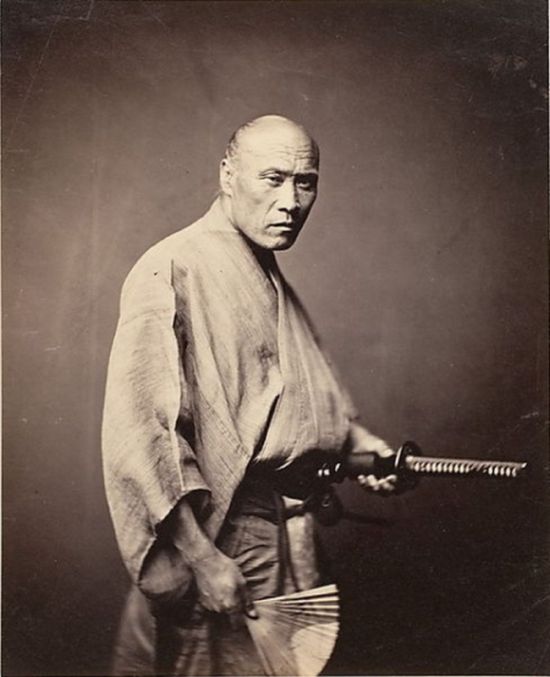|
|
History: Samurai Portrait
|
An old term for a soldier popularized by Matsuo Bashō in his famous haiku. Literally means "vessel, tool, weapon" (cf. Japanese utsuwa 器 and utsuwamono 器物). Possibly from a calque of Chinese 兵 bīng, which likewise can mean either "soldier, pawn" or "weapon, arms (of attack, as opposed to 甲 jiǎ "armor, defensive arms")."
Myth and reality
Most samurai were bound by a code of honor and were expected to set an example for those below them. A notable part of their code is seppuku (切腹 seppuku) or hara kiri, which allowed a disgraced samurai to regain his honor by passing into death, where samurai were still beholden to social rules. Whilst there are many romanticized characterizations of samurai behavior such as the writing of Bushido (武士道 Bushidō) in 1905, studies of Kobudo and traditional Budō indicate that the samurai were as practical on the battlefield as were any other warrior.
|
|









